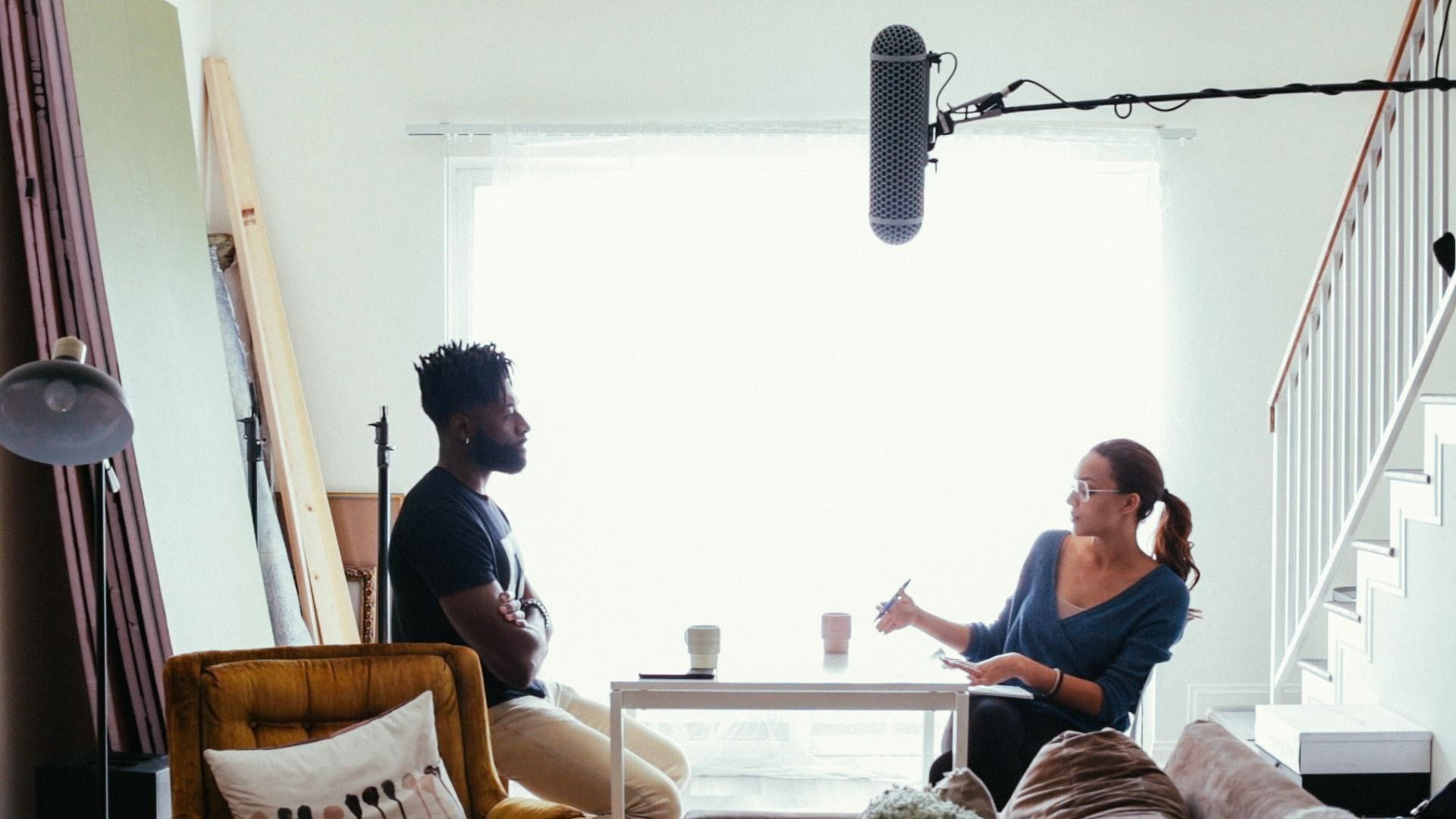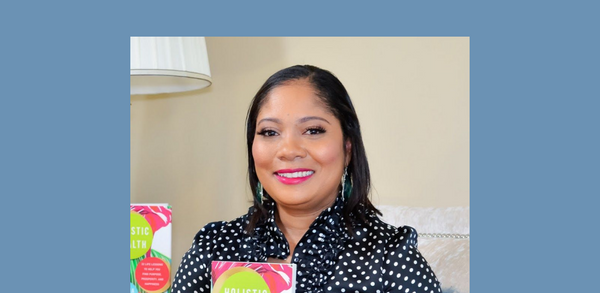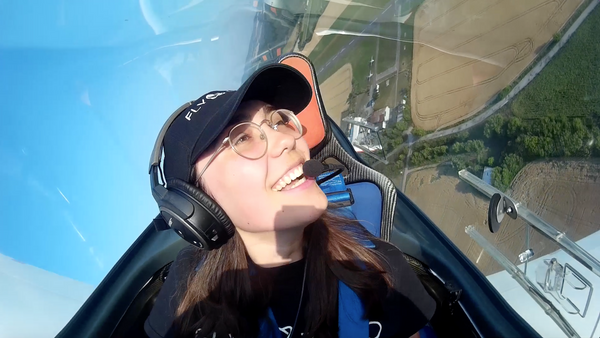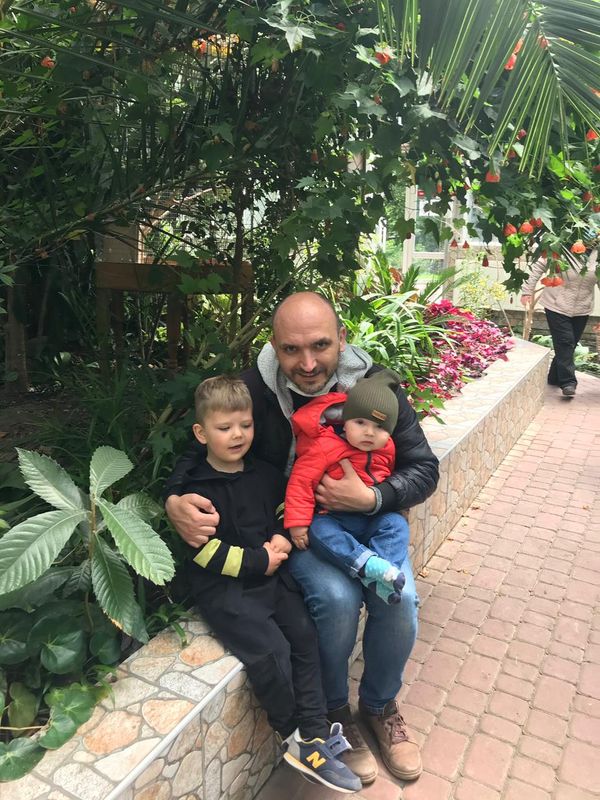Q&A with Adaire Byerly: In Front of the Camera, to Inside the Mind
Work environments can breed a host of mental health challenges, and high-profile industries are no exception. Model, Adaire Byerly, discusses her experience, and how she's channeled it into helping others.
by Victoria Oldridge
Adaire Byerly, Founder of Entertainment Mindframe, spent years in the modeling arena – including featured in Vogue -- before the toxicity of the industry not only affected her personally, but also made her critically aware of the negativity that spanned all high-profile professions. Merging her industry knowledge and interest in cognitive behavioral science (CBT), Adaire founded Entertainment Mindframe, where she collaborates with neuroscientists to create methods and practices that optimize companies' working environments.

Truffld: You spent a decade working in the modeling industry, and you’ve referenced the spectrum of ways that the industry as a whole can erode people. In what ways did the experience affect you?
Adaire: I officially started my career in 2009 as a professional model and over time I managed to get into commercial acting earning my SAG eligibility. I worked with a high tier of professionals, so I was able to see the 'real' side of showbiz. Throughout my years in the industry I witnessed patterns of psychological behavior that were projected into the way people did business, and the ways in which it was negatively impacting someone’s success or an entire brand.
Dealing with entitled-type personalities, I built this love and hate relationship with the industry. The drama, inconsistency, expectations, lies, mental-bullying, power plays, false success, dual- identities, and gossip was taking a toll on me mentally. I would take months off just to recharge and function normally. When I started to look outside myself, I realized that my experience was not just mine; many professionals experienced the same mental pressures. That was when I noticed the gap of understanding human nature in this world of fame and decided to bring brain and behavioral science into the operations side of the business.
I often explain that we are so good at the art of communication, that we inadvertently avoid the science of it. Communication is a science as much as it is an art. It is not just designed for you to express how you feel. The purpose of communication is to become fluent with another person by speaking at their comprehension rather than enforcing your own. By the same token, this industry is not just a platform for you to showcase your talent – these industries make up billions of our economy, and when you break it down to that fact, you understand why it is so crucial to be aware of our behavior in the workplace.

Truffld: You sustained a debilitating back injury that rendered you essentially incapacitated -- both due to pain and function -- but you forged ahead with photo shoots anyway, and attributed the resilience as an ability to compartmentalize and “find the beauty at any painful moment in life.”
Adaire: Oh yes, I had a 16mm bulging disk that was pressing on major functioning nerves in my lower back, preventing me from any movement in my lower body without assistance. It was the worst pain I had ever experienced. After a month or so it started to weigh on me mentally and emotionally. Eventually it started to break me down. After finally having the correct pain medicine, I was able to be more mobile on a cane. However, I was still extremely crooked and in pain. There was a particular shoot I went to that I was very hesitant about, and my loved ones told me not to go, but I told them “I have to move because I can’t accept this defeat.” Though it was excruciating pain, I went to the shoot, sat down, had someone take away my cane and I took my mind out of the moment of pain and focused on the camera.
We all reach those moments, right? Where we are just so beat up by life, emotionally, mentally or physically to where we have to scrape ourselves up off the pavement or sit in our misery. But we all have a choice, and there is always a silver lining somewhere.
I wasn’t suppressing the pain or being naïve, it was a choice to focus on seeing the beauty in the midst of pain. I have applied this throughout my life in various situations when I found times to be unbearable, however, this was the first time I applied it physically and could see the result of that mentality. I am very proud of that picture because of it.
Truffld: Your industry of focus is primarily under the entertainment umbrella, though other fields also experience many of the challenges you’ve referenced. What are some of the most noticeable differences in potentially harmful behavioral patterns that you’ve seen between creative workplaces versus others?
Adaire: I can start by explaining that creatives – mainly artistic creatives – operate differently than those who are not. For one, it is common to run into talented people who have a troubled past that they pull from for inspiration. That pain or trauma is usually used as fuel but can be dangerous because it causes our brain to compartmentalize and dissociate, giving us a false sense of reality to avoid the parts in us we have to work on. Two, creatives are not fans of structure because they translate that as limitations. Three, creatives are more focused on expressing themselves and having a platform, than the need to be “professional”. So let’s just focus on trauma as inspiration, no structure, and lack of professionalism – what happens when those three things are at play amongst a team? Your brain and body begin to conceptualize that you are in potential danger.
What happens when humans think they are in danger? Fight or Flight response is activated, which is the same hormone that is activated when someone is experiencing trauma, then the cognitive part of our brain shuts down and we begin making decisions out of irrational thinking. Now you have an environment where there is no trust, inspiration, time management, consideration, compassion or understanding, resulting in inconsistency, mental-bullying, power plays, etc.
Because this is natural human behavior, you will see this in other industries as well. However, because other industries do have more regulations and consequences, they also do not require you to sacrifice normal human needs as much. Also other industries do not have to be judged or dictated by the general population. So you may see similarities in behavior in other industries but it won’t be as extreme, accepted or expected as it is in the world of fame.

Victoria: Both of your parents are entrepreneurial, which has influenced your direction in launching Entertainment Mindframe in early 2020? What are some of the key tenets you’re gleaning so far, about the ups and downs of embarking on a largely solo endeavor?
Adaire: Growing up with parents who are successful entrepreneurs molded my mind in ways I didn't realize until I was older. Not only were they business owners, they were the first people in their family to marry outside of their race during a time when there was still much public tension between the African American and Caucasian races. Being born into that really conditioned me to go for the chances that seem impossible even if the odds are stacked against you and society doesn't approve. It gave me this bullet-mentality to calculate every move I make while being aware of the dangers and possible challenges that lie ahead.
But it doesn’t start with my parents. My grandparents on both sides had entrepreneurial minds. My ancestors on my father’s blood line were the first slaves in east Texas to own land immediately after emancipation. They started businesses and built an entire town called Shankleville from the land from which they were once endlaved. I can’t deny that it is literally in my DNA to overcome and succeed in any difficult endeavor I have in front of me. It's just a part of who I am.
Truffld: How can your clients’ neural network be modified or rewired through your work, and what are some of the most pronounced behavioral improvements you’re seeing in their creative abilities?
Adaire: The rewiring works through applications and approaches through brain and behavioral sciences. We identify and eliminate the harmful and intangible issues in the active workplace to enhance the environment, bringing success to individuals and the production, project, or company as a whole. We focus on the science of communication and survival in high-profile industries by expanding neuroplasticity, which is changing the structure (belief systems, associations, and habits) that starts in the brain and is projected into the environment. We also must understand the nervous system affected by our hormones, that cause us to act the way we do.
I have professional scientists that help with these approaches and theories because I want to ensure that the methods used have long-lasting results. The improvements I see expedite the turn times on projects or workload, increases revenue, lowers environment tension, provides more creativity, increases employee retention rate, and creates an efficient work environment.
Truffld: Through consulting with cognitive behavioral specialists and neuroscientists, you work collaboratively to devise a plan for your customers. What does the overarching framework look like?
Adaire: When I come in I always bring my sense of humor with me. The things that I focus on can be perceived as heavy but I want to assure my clients or anyone interested, that we can enhance difficult environments with ease and laughter. I give a short, anonymous assessment that helps me quantify where the team is in terms of tension, how they learn, and how or where I need to start working with them.
I work hands-on with a client for about three months, three-four days a week; six months if it's a larger project or if they desire me to help them revise company policies. I usually start to see a shift in behavior and the environment within the first 2 weeks. I witness a lighthearted culture and a sense of freedom with my clients within the first month, which is a result of relieving intangible tension. I also provide interactive workshops or seminars where I come in for a day and provide some mental stretching.
The work can be challenging but it takes me back to my philosophy of finding beauty in the midst of pain. Unveiling the best part of people, even if they aren't likable, and watching them fall in love with their self-discovery is probably the most rewarding part of all. Knowing that my intentions, ideas, and executions enhance other people’s lives and business is why I do this line of work. Human nature is such a fragile thing and I love taking care of it.
Follow Adaire on IG: @brainsbehindfame



